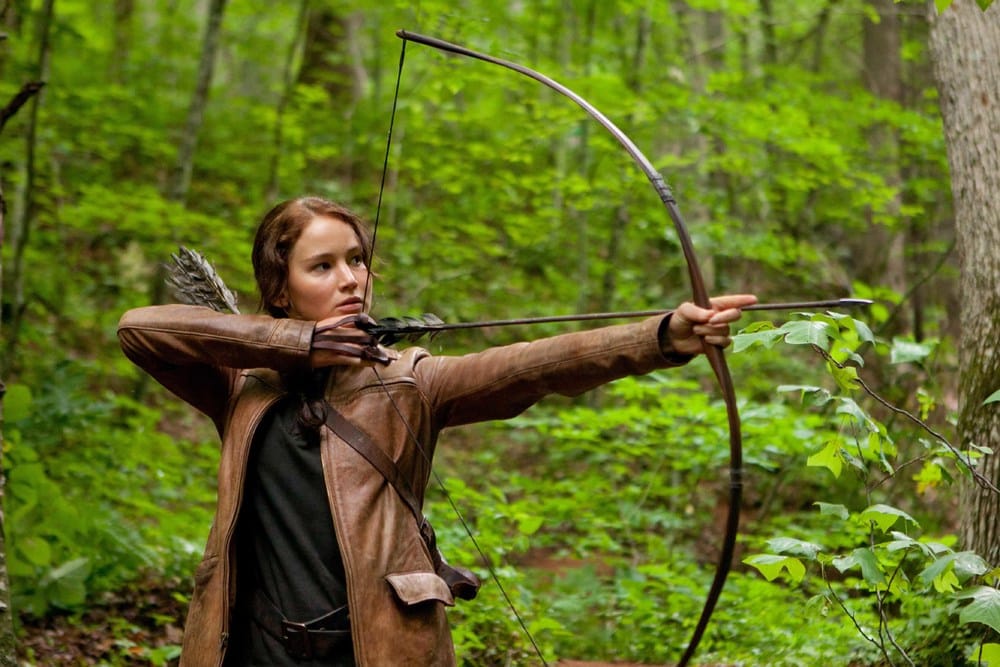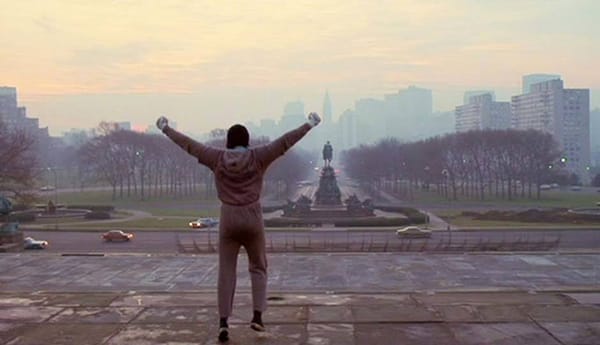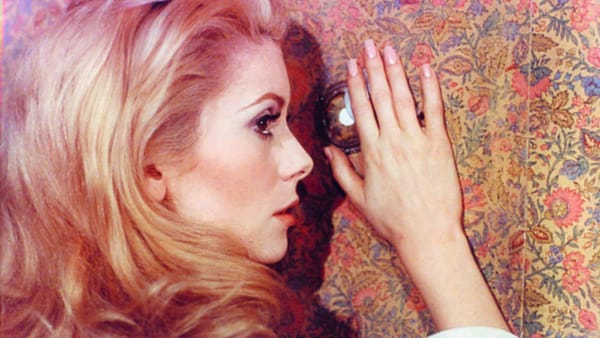The unstoppable march of the YA dystopia
With the last five years seeing multiple YA dystopia series, we explore what makes them a continued attraction to teens

When the first Hunger Games film was released, back in March 2012, I was still in secondary school, preparing for the end of my final year, and the subsequent upheaval of moving to university. And it was either that summer, or the summer before that that I sat down and devoured Suzanne Collins’ YA trilogy, racing against the looming deadline that would see me make my transferral to the adult world, when I would put away my childish things, no longer having an excuse to read fiction aimed at an audience several years younger than I. Looking back, it was the right time to read it; while life as a 20-something is full of upheavals of its own, mainly involving crying into hastily-made pesto-pasta, the move to higher education marked the closing of a chapter of my life, of my adolescence.
Now, here we are, three and a half years later, and the final instalment of the series has just been released: TheHunger Games: Mockingjay – Part 2, again marking the end of an era. Many of those my age have left higher education, and are now taking their first tentative steps into the ‘real’ world, living out their Lena Dunham-esque fantasies of rising rent prices and insecure employment. But in that time, the cultural landscape has shifted beneath our feet – where once vampires and wizards were par for the course in Young Adult (YA) fiction, now dystopia is king.
where once vampires and wizards were par for the course in Young Adult (YA) fiction, now dystopia is king
The last three years has seen a proliferation in dystopian fiction, whose film adaptations approach with a sense of weary inevitability. The last year alone has seen films in The Hunger Games,Divergent, and Maze Runner series, all of which feature plucky teens facing up against an oppressive power structure helmed by adults. Of course, dystopia has been a popular genre for years, with Brave New World, 1984, and The Handmaid’s Tale all leaving their marks on impressionable young minds. But what seems different now is the pace with which new books and films are released, which has reached an oppressive onslaught; Peter Bradshaw, in his review of Maze Runner: The Scorch Trials, wrote that it was ‘the sound of a profitable YA franchise running out of steam’. Surely, surely, this bubble must pop soon, as teens, shot through with fickleness, move on to the next big thing.
And yet, it only seems to be growing. At the time of writing, the latest of _The Hunger Games _films, in cinemas barely a week, has taken nearly $250 million. The other series are also in ruddy financial health: not a single film from The Hunger Games, Divergent, or Maze Runner series has failed to make a substantial profit. The first _Maze Runner _film, made on a budget of $34 million, took more than ten times that in box office takings; TheHungerGames series has grossed around $2.5 billion, while the second in the series, The Hunger Games: Catching Fire was the 10th highest grossing film in the USA ever. While critics may be largely ambivalent about the films, the public are lapping it up, as the films garner MTV accolades, People’s Choice Awards, and gargantuan profits. It seems dystopian films are a guaranteed smash hit.
So why are they so popular, and why now? Several have identified the obvious analogy for the high school experience, an idea that perhaps doesn’t transfer seamlessly over to the UK system. Dana Stevens, writing in Slate, said that dystopian fiction ‘externalises the turmoil that’s already taking place in adolescents’ minds, hearts, and bodies’. For Shaw, the brutal killing in The Hunger Games is the perfect analogy for the quest towards perfection and popularity taking place at schools up and down the country: The Hunger Games, Shaw says, ‘is the story of a girl who’s voted the homecoming queen of the world’. But Collins’ hero, Katniss Everdeen, is a reluctant icon, and this perhaps shows the hidden pressures associated with being top of the food chain. While the double-edged sword of popularity has been explored by films such as Mean Girls, Heathers, and Carrie, this new wave of dystopian cinema seems to be upping the ante, perhaps reflecting the increased pressures changes like Instagram and Twitter have wrought on the teenage microcosm.
The brutal killing in The Hunger Games is the perfect analogy for the quest towards perfection and popularity taking place at schools up and down the country
For fans of Divergent, the analogies with school become even more obvious: set in a future Chicago, society is divided into five poorly-named factions, based on personal traits; those who do not acquiesce with the system and conform to one of the five mind-sets, are ‘Factionless’, and have no social worth. As Tom Stone, writing in The Guardian said, Divergent is about ‘A 16-year-old girl trying to find her place in a world modelled on a series of frat houses’. In order to survive, Tris Prior (Shailene Woodley) must disguise the fact that she is ‘divergent’, placing her light under a bushel in order to fit in; it’s a narrative familiar to teenagers up and down the country, who have to sand off parts of their personality in order to fit the space they’ve been allocated.
But also present within both The Hunger Games and Divergent is the sheer instability of the whole system, one that can be taken down by a teenager. Stevens writes that ‘any genuine self-discovery will revel a flaw in the whole taxonomy, bringing down the system’; reading those words, it is difficult not to think of Essena O’Neill, the Australian teen, who recently revealed to her half a million Instagram followers the carefully curated artificiality of her online life. Editing the caption to one photo, she writes of her ‘contrived perfection made to get attention’, one that made her feel ‘incredibly alone’.
In contrast, Andrew O’Hehir, writing in Salon, seems to think that these books mask a sinister message about individualism and libertarian ideals. For him, _Divergent _and The Hunger Games are ‘capitalist agitprop’, ‘propaganda for the ethos of individualism, the central ideology of consumer capitalism’. This theory centres around the idea that such novels feature an individual protagonist, who overcomes extreme oppression (typically in the form of big government), to defend their right to express themselves. The upshot of the films, O’Hehir writes, is that they ‘remind ourselves how grateful we should be to live in a society where we can be “ourselves”, where we can enjoy unspecified and vague freedoms’. It is an idea picked up by Ewan Morrison in The Guardian, who sees the oppressive antagonists of the films as symbols, not of power gone awry, but of states and community, which the individual must overcome in order to thrive, leaving behind the community. The Hunger Games, under this reading, becomes a Randian struggle for independence, where social parasites must be killed in order for the individual to realise their true potential.
It is true that these series promote is the idea of uniqueness; sitting in the cinema, the anonymous teen can identify with the main character for a few hours, imagining a world where they have left their suburban existence behind, and become world-famous. However, while previous popular film and book series, such as Harry Potter and the Twilight series, feature protagonists thrust into the spotlight, where the dystopias differs is in how violent they are. Now, I don’t want you to think this is some kind of Helen-Lovejoy, won’t-someone-please-think-of-the-children diatribe about the dangers of immoral reading material – young people should be exposed to adult themes of loss, war, and violence early on, and the medium of literature offers a more rounded view than might be found on the nightly news – but in the media popular just 5 years ago, it was enough for the individual to rise; now, not only must the individual succeed, but others must fall. In The Hunger Games, where the pressures of society force adolescents to turn upon each other in a ritualised bloodbath, could we finally have the YA novel for the post-Columbine generation?
Do we finally have the YA novel for the post-Columbine generation?
While such an interpretation is interesting, it seems a bit overwrought. The natural tendency for adolescents to rebel against authority needs no explanation, so deeply is it carved into the bedrock of our collective culture. But there is something to be said about the new direction YA fiction and film has taken, and I personally see it differently to Morrison and O’Hehir: as the global recession has worsened, leading to massive cuts to the welfare state, a desperately needed paradigm shift has not occurred. Instead, what we have is a doubling down of Thatcherite policies, and an emphasis on individual action that comes directly from central government. Why is it a surprise that teenagers are lapping up narratives about how they have to rise above and defeat their peers, when individualism is the order of the day, and we are all in direct competition for the state’s limited resources?
We are currently less than a year into a Conservative-majority parliament, and since Cameron came to power in 2010 youth services have been decimated: raised tuition fees mean the average student will leave university £45,000 in debt; a refusal to build social housing has led to a property bubble where the average London house is 13 times the median salary; NHS mental health services for young people, already stretched to their limit, have been cut by £35 million. The result: an environment for young people that is not dissimilar to a Hobbesian state of nature, one where life is solitary, poor, nasty, brutish, and short. The government tells us that under-25s don’t deserve the living wage since they are ‘not as productive’, while stripping 18-21 year-olds of housing benefits, despite the fact that 49% of people living in homeless accommodation are aged 16-24. Not only that, but a recent report indicates that young people are most likely to volunteer their time to serve their local community, with the under 25s spending twice as much time as the 55+ acting as volunteers.
We live in a world where the baby boomer generation holds a majority of the power. Young people hold up this system by offering unpaid labour, be it in the form of charity or internships, and are made completely dependent on those at the top. As the austerity cuts deepen, and social services for young people are completely swept away by a tide of ideological economics, our society begins to resemble a desperate scramble to the top, a war of all-against-all. Why should we be surprised that dystopian fictions, in hindsight quasi-prophetic, continue to attract audiences? Dystopias no longer reflect our worst fears; they now reflect our basic reality.








